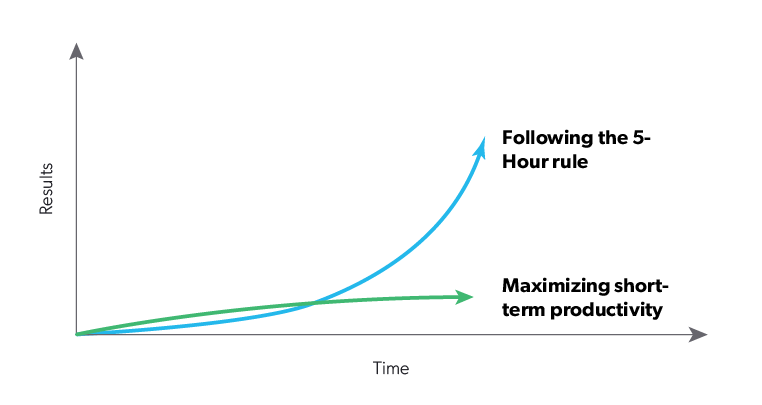How to read 52 books a year
Things can move overwhelmingly fast in business. With probably over a hundred (maybe even two hundred) emails a day, hourly meetings, constant alerts, calls...a lot of things stack up into an ever-expanding to-do list, making it difficult to see the forest for the trees.
Perhaps in one of the rare moments you have to yourself—maybe you’re checking out LinkedIn—you come across an article (and there are many of them) that claims the secret to success for people like Bill Gates, Warren Buffet, Mark Zuckerberg, Elon Musk, and Sheryl Sandberg is their huge consumption of books, reading 25, 50, or 100 books annually. “Wow,” you may think. “I can barely get through one a month with my schedule. They must be even busier. How do they do that? And more importantly, why bother?”
Continuous Learning
The “inoculation” theory of education had been the norm until recently. You go to school or take a course, learn what you need to learn, and then once you have mastered the information required to get your degree or pass the test, you stop learning. This is the opposite of what the avid readers mentioned above—and in fact, anyone looking to build continually on success—does.
Tech innovation, increased connectivity, globalization—all mean that things change fast. How something was done ten years ago has probably changed significantly (if not, I’m sure a startup somewhere is working on it). Continuous learning, that is imbibing vast amounts of information is necessary to not only keep pace but to get ahead.
Laszlo Bock, SVP of People Operations at Google has noted that we’re moving out of the information age where power was held by those who had access to information, to a learning age where information is far more democratic. Knowing how to learn, and then how to apply this continuous education separates those at the top of the field from everyone else. The only constant in today’s workplace is change, and adopting a continuous learning approach is critical to keeping a seat at the table.
Setting aside the time to learn something new may sound like a luxury, but consider the potential lifetime value. Day-to-day improvements, expansion of skills, adoption of new strategies or ideas to get ahead—the benefits take on a snowball effect and gain momentum over time.
The Five Hour Rule
Motivation and the incentive to learn is all well and good, but you still need to find the time to add continuous learning to your already hefty schedule if you want to get anywhere close to 52 books a year.
I’ve found that being systematic about blocking off time is the best way to do this.
The average business book is around 200-225 pages, and around 250-300 words per page, so you’re looking at an approximate upper limit of words per business book of 67,500.
The average reading speed of an adult is between 200-250 words per minute (test your own here). If we assume an average of 200 words per minute as a worst case scenario, you can budget about five and a half hours per book. Dividing this across a week, that’s 45 minutes a day. Breaking it down in this way the lofty goal of 52 books a year feels much more achievable. Cutting down time in front of the TV, checking Facebook, or just goofing off to carve out 45 minutes a day seems pretty reasonable, if you have a commute, it’s even easier.
I implemented this technique a few years ago. I targeted one book a week, planning my reading list around whichever topic I felt I needed to know more about. Anyone at Pellucid will tell you, each time we move forward in a different area of the business, from marketing, to sales, to product management, I learn as much as I can about it, researching the ten books I think will advance me the most.
After some trial and error, I developed a schedule that gets me to my target by:
Using my commute. I have a 30-minute subway commute to the office. This gives me five hours a week (sometimes longer with delays).
Deferring TV. Two nights a week I avoid watching anything on TV, which gives me about two hours a week (and really, this isn’t a huge sacrifice considering some of the programming options).
Weekends: Grabbing 45 minutes each day on the weekend (which sounds like it should be easy, but when you have a three-year-old still requires a little bit of planning).
I usually hit about 8.5 hours of reading a week. I would love to say this gets me to 80 books a year, but not really—as with anyone else, work, family, other things come up that cut into my reading, but it gets me closer and feeds the need to learn continually.
Changing habits is never easy; but, I can say that finding the time to learn and read more has had a positive impact, equipping me to understand and solve problems outside of my wheelhouse and advance what we do at Pellucid.
What are your thoughts on continuous learning? How have you put it into practice? Email me at adrian.s.crockett@gmail.com.


